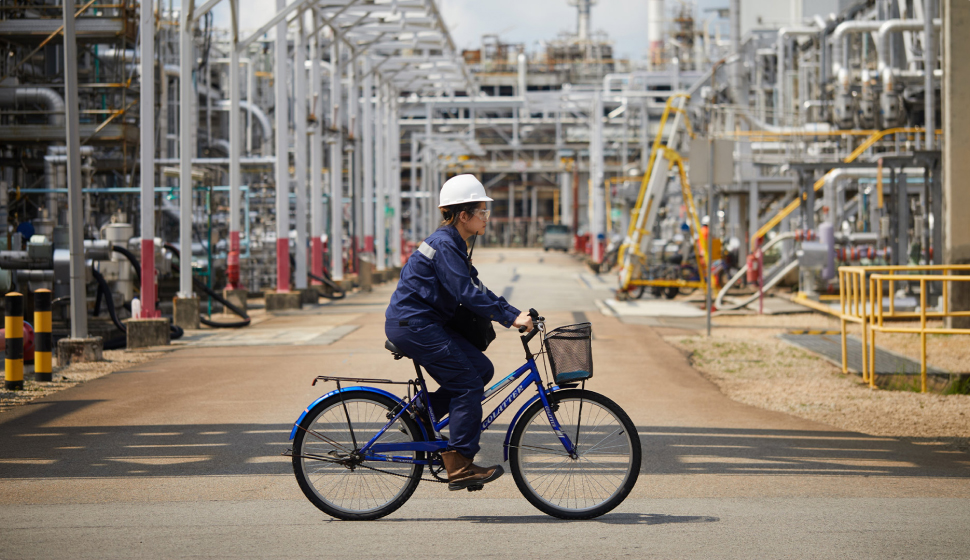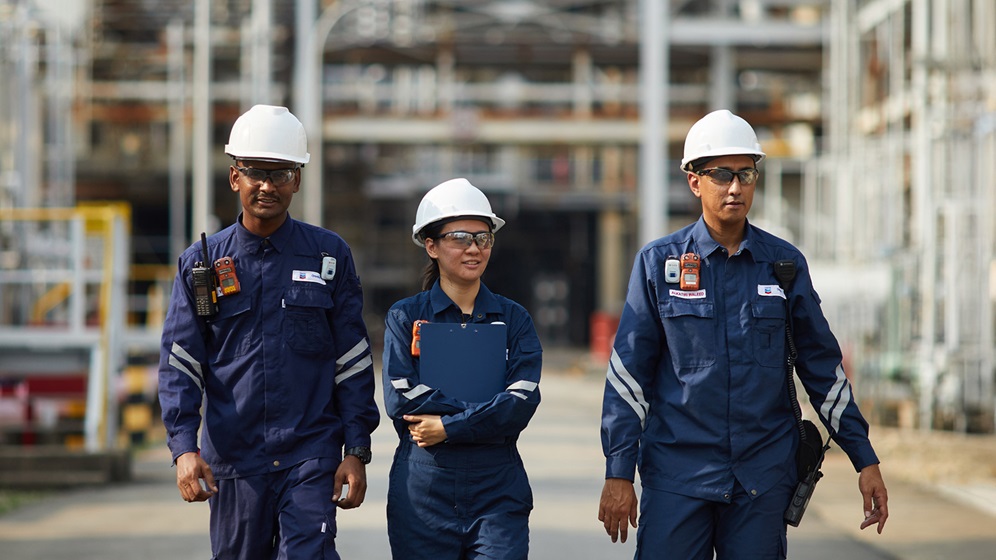singapore


Chevron has been a pivotal energy partner in Singapore since 1933. As our regional headquarters for Downstream operations, Singapore plays a key role in our global business, from oil and gas production to supply and trading.
barrels of crude oil produced daily in 2024 by Singapore Refining Company
117K
barrels of oil equivalent produced daily in 2024 in Asia-Pacific region
385K
natural gas produced daily in 2024 in Asia-Pacific region (cubic feet)
1.6M
our operations
Singapore integrates our manufacturing, marketing and lubricants businesses and hosts a vital regional trading hub that strengthens our global supply chain.
refining
In 2024, the refining sector in the Asia-Pacific region demonstrated significant activity, with refinery crude units reaching 646,000 barrels per day, and refinery crude unit capacity at 720,000 barrels per day. Sales of refined products amounted to 1.5 million barrels per day.
Chevron has a 50 percent interest in the Singapore Refining Company (SRC), which has a crude unit capacity of 145,000 barrels per day producing liquefied petroleum gas, gasoline, jet fuel, diesel, fuel oil and asphalt. Recent upgrades have enabled the refinery to produce higher-value gasoline that meets stricter emission standards.
supply and trading
Chevron’s Singapore supply and trading office is home to one of the company’s four global trading floors, along with London; Houston, Texas; and San Ramon, California. The organization manages daily commodity transactions of 5 million barrels of liquids and 5 billion cubic feet of gas.
marketing and lubricants
The Caltex® brand, managed in Singapore, offers products like Caltex gasoline with Techron® and Caltex Diesel with Techron® D. Chevron operates 26 Caltex service stations and Star Mart-branded convenience stores across the country.
Chevron is also a major aviation fuel supplier in Singapore, working to safely supply jet fuel to airlines at Singapore Changi International Airport.
lubricant additives
Chevron Oronite operates a lubricant additives manufacturing facility in Singapore, its largest in the region, supplying products to Asia-Pacific markets.

in the community
From our investments in education to our volunteering and fundraising efforts, Chevron has a history of partnering with and supporting Singapore’s vibrant communities.
Education programs
In 2024, Chevron supported learning-based programs in Singapore through initiatives such as the Horizon Hydrogen Grand Prix (H2GP) Singapore series. This program gives students the chance to learn about renewable energy through designing, building and racing hydrogen-powered cars.
Volunteering
Chevron encourages its employees to make a positive impact in Singapore communities by supporting efforts such as food aid initiatives and education programs. In 2018 alone, employees and family members contributed more than 450 volunteer hours toward the support of more than 6,000 beneficiaries through our local community partners.
Environmental initiatives
Chevron’s Singapore Manufacturing Plant (SMP) completed approximately 30 energy improvement and carbon intensity reduction projects from 2019 to 2022, achieving a cumulative energy savings of about 4.5% of SMP’s annual energy usage and a carbon abatement of 3,700 tonnes of CO2 equivalent.
contact information
3 Fraser Street #12–28
DUO Tower
Singapore 189352
Telephone: +65-6318-1000
Media Relations: Chevron Singapore – Corporate Affairs
Caltex Fuels & Lubricants: Contact us in Singapore
Employment Opportunities: Careers at Chevron
Data Protection: Chevron Singapore – Data Protection
21 Sakra Road
Singapore 627890
Telephone: +65-6263-2601